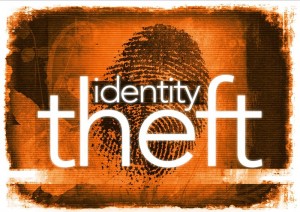Every 2 seconds someone’s identity is stolen and utilized in the United States. Odds are, your information will be hacked at some point –your information is out there in a million different ways, from your doctor’s office, stores, vendors, past employers, lenders, etc. It’s more a matter of if a thief utilizes your information, rather than if they will have the option. Most victims spend dozens of hours and sometimes years trying to rectify the negative credit rating that results from being hacked.
Our credit block service stops thieves from utilizing your information, but if it’s too late, the steps below can help.
Step 1.
Obtain your credit report, review the “Inquiries” Section and confirm that all inquiries for new credit in the past 2 years were authorized by you.
Step 2.
Place a fraud alert on your credit reports to alert creditors that you’ve been the victim of identity theft and they should verify new account inquiries. This will not guarantee that a thief cannot open new trade lines, but instead asks the lenders to be extra diligent for a period of 90 days. An extended alert can be placed for a period of 7 years.
Equifax
P.O. Box 740241
Atlanta, GA 30374-0241
www.equifax.com
1-800-525-6285
Experian
P.O. Box 9532
Allen, TX 75013
www.experian.com
1-888-397-3742
TransUnion
P.O. Box 6790
Fullerton, CA 92834
wwww.transunion.com
1-800-680-7289
The credit bureaus have four business days to block the fraudulent information after receiving your request outlined in the steps above and also must prevent the fraudulent items from reappearing on your credit report.
Step 3.
File an Identity Theft Police Report with your local law enforcement agency that states you are a victim of identity theft. A simple one page police report that states you were a victim of identity theft (with no other details) will suffice, although you should include details “if any” that you are aware of. This will need to be completed in the precinct in which you live. Send a copy of the police report, the notarized identity theft affidavit, and a copy of your credit report with the fraudulent items circled to all three credit bureaus .
Step 4.
Complete and notarize an Identity Theft Affidavit with any creditors that fraudulently opened accounts in your name. Make sure you call each creditor separately and ask them which address you should mail correspondence that pertains to you being a victim of identity theft. Ask them to close any accounts that you didn’t open.
Step 5.
File a complaint with the Federal Trade Commission. The FTC can refer you to other government agencies or companies that can take further necessary action.
Call the FTCs Identity Theft Hotline: (877) IDTHEFT (877-438-4338)
Or use its online identity theft complaint form: https://www.ftccomplaintassistant.gov/
Or write: FTC Identity Theft Clearinghouse, 600 Pennsylvania Ave. N.W., Washington, DC 20580.
The FTC’s uniform fraud affidavit form is available at http://www.ftc.gov/bcp/edu/resources/forms/affidavit.pdf
Visit the Web site for the President’s Identity Theft Task Force for Identity Theft Victims’ Statement of Rights under federal law: http://www.idtheft.gov/
Step 6.
Obtain a security freeze with each of the 3 bureaus. Note: Each bureau has their own process to implement this service, and you will need to contact each one every time you want to lift or cancel the freeze. There are multiple ways to set up, lift and cancel a freeze, and it’s a complicated process but worth it.
Step 7.
If you need it, get legal help. You may want to consult an attorney for assistance in taking legal action against creditors, credit bureaus, and debt collectors if you are having trouble clearing everything yourself.
